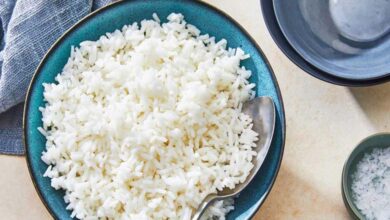Why Is It Recommended to Follow a Low-Fiber Diet?

Dietary fiber plays a vital role in maintaining a healthy diet. It promotes digestion, prevents constipation, and benefits heart health. However, under certain specific conditions, it is recommended to reduce fiber intake. A low-fiber diet can be prescribed to alleviate certain digestive disorders, facilitate recovery after surgery, or prevent irritation of the gastrointestinal system.
But why exactly would such a restrictive diet be advised? Let’s explore the medical reasons and situations where a low-fiber diet becomes necessary.
-
5 Summer Fruits That Naturally Lower Uric Acid Levels
-
The “Key to a Healthy Weight”: Three Types of Fiber to Include in Your Diet
What Is a Low-Fiber Diet?
A low-fiber diet, also called a low-residue diet, limits the consumption of fiber-rich foods like fruits, raw vegetables, whole grains, and legumes. The goal is to reduce the amount of undigested material passing through the intestines, thereby decreasing stool volume and frequency.
Typically, a low-fiber diet allows:
- White bread, white rice, and refined pasta
- Peeled or cooked fruits
- Well-cooked vegetables without skins or seeds
- Lean meats, fish, and eggs
- Dairy products in small amounts
-
5 Fiber-Rich Foods to Help You Get Rid of Belly Fat
-
These Grains Contain the Lowest Amount of Carbohydrates
Why Follow a Low-Fiber Diet?
- To Promote Healing After Digestive Surgery
Following surgery involving the intestines, colon, or stomach, doctors may recommend a low-fiber diet to allow internal tissues time to heal. Reducing the digestive workload prevents strain on surgical sutures or operated areas.
- To Manage Symptoms of Inflammatory Bowel Diseases (IBD)
For individuals with Crohn’s disease, ulcerative colitis, or other inflammatory disorders, a low-fiber diet during flare-ups can help:
-
What are the preferred foods for lowering cholesterol? Advice from an expert
-
Watch out for these risk factors – If you follow a raw vegan or vegetarian diet
- Decrease abdominal pain
- Reduce diarrhea frequency
- Lower the risk of intestinal obstruction
- To Prepare for a Colonoscopy
Before undergoing a colonoscopy, it is often necessary to completely empty the bowels. A low-fiber diet assists this process by reducing stool production and allowing better visualization of the intestinal lining.
-
Gluten-Free Products: Limited Benefits and High Costs
-
Study – Plant-Based Proteins: the Secret to a Long Life
- To Relieve Temporary Digestive Disorders
In cases of severe diarrhea, acute diverticulitis, or partial bowel obstruction, reducing fiber intake may temporarily soothe the intestines and encourage a gradual return to normal digestion.
Which Foods Should Be Avoided?
- Whole grains (whole wheat, whole oats)
- Raw or fibrous vegetables (broccoli, cabbage, green beans)
- Thick-skinned or seeded fruits (raspberries, figs)
- Legumes (lentils, chickpeas, dried beans)
- Nuts and seeds
-
Foods that promote good nutrition in the elderly
-
Discovery of an Unexpected Link between Diet and Lung Cancer
What Are the Risks of a Low-Fiber Diet?
Although helpful in specific medical cases, maintaining this diet long-term can lead to:
- Constipation
- Vitamin and mineral deficiencies
- Increased risk of chronic diseases (if continued without medical reason)
Therefore, a low-fiber diet should always be followed under medical supervision and adjusted based on the patient’s health progression.
A low-fiber diet is not intended for everyone. It meets specific medical needs and should generally be temporary. It is essential to consult a healthcare professional before making significant dietary changes. When the time comes to reintroduce fiber, it should be done gradually to help the digestive system adapt smoothly.












